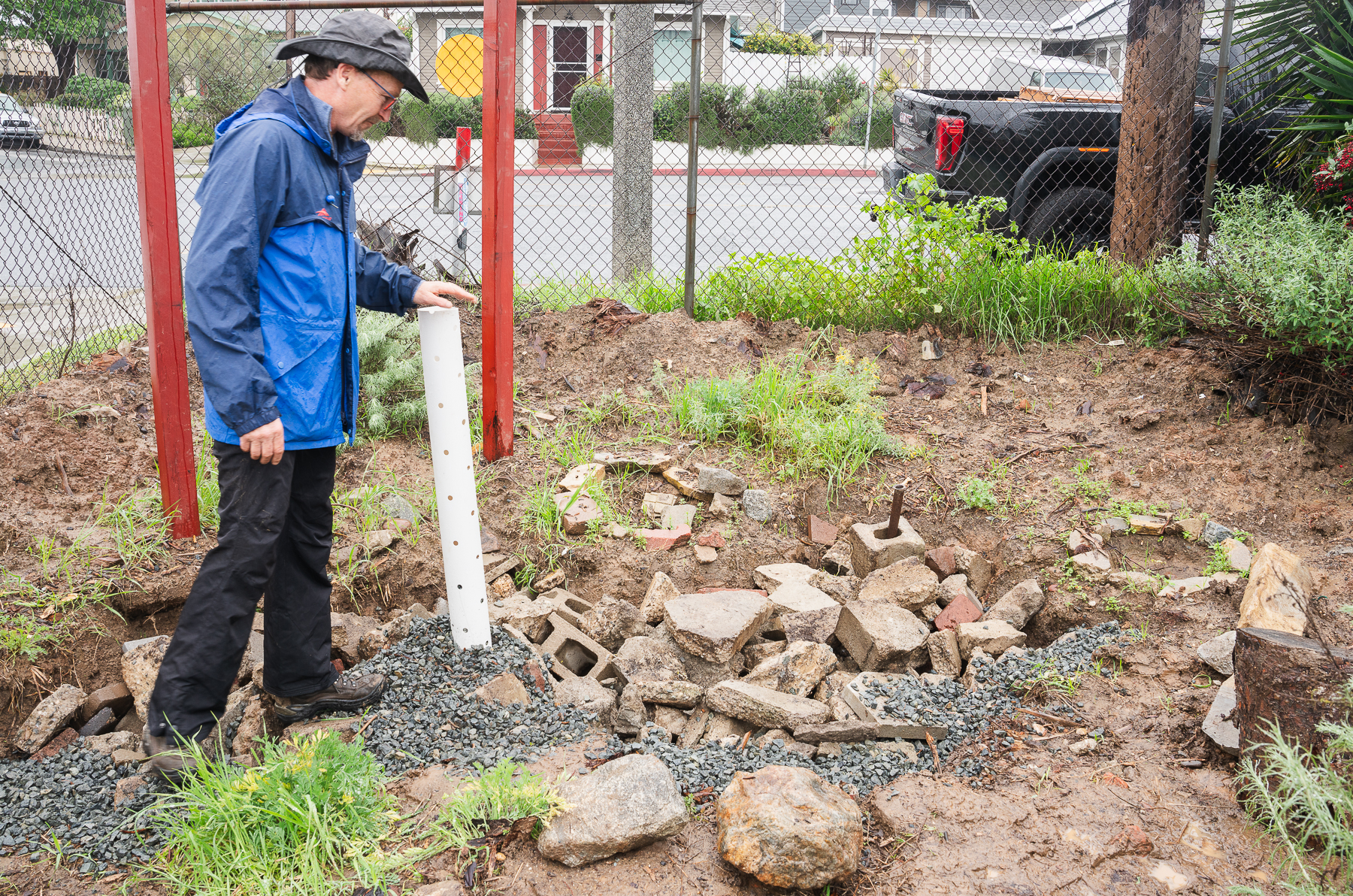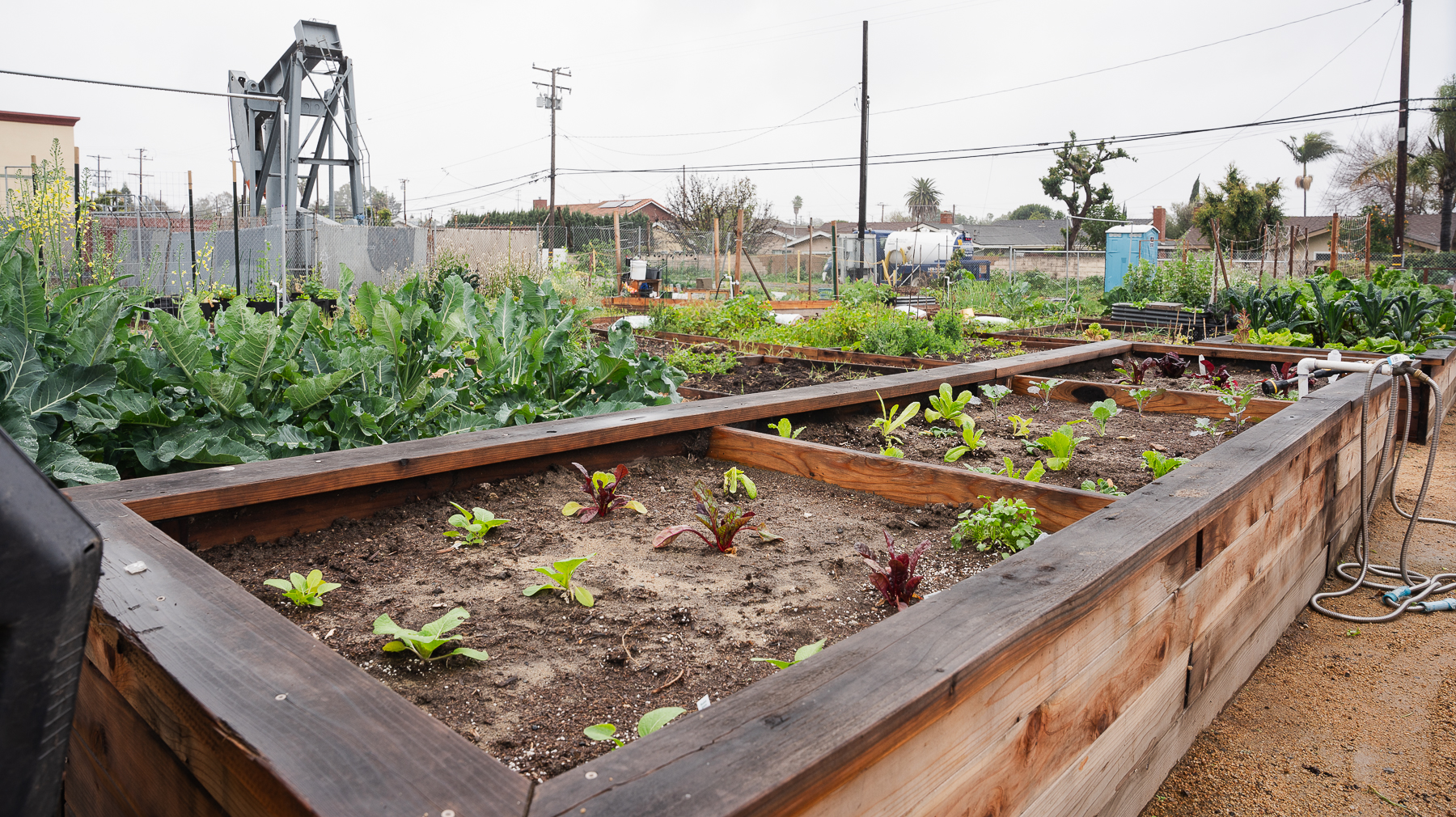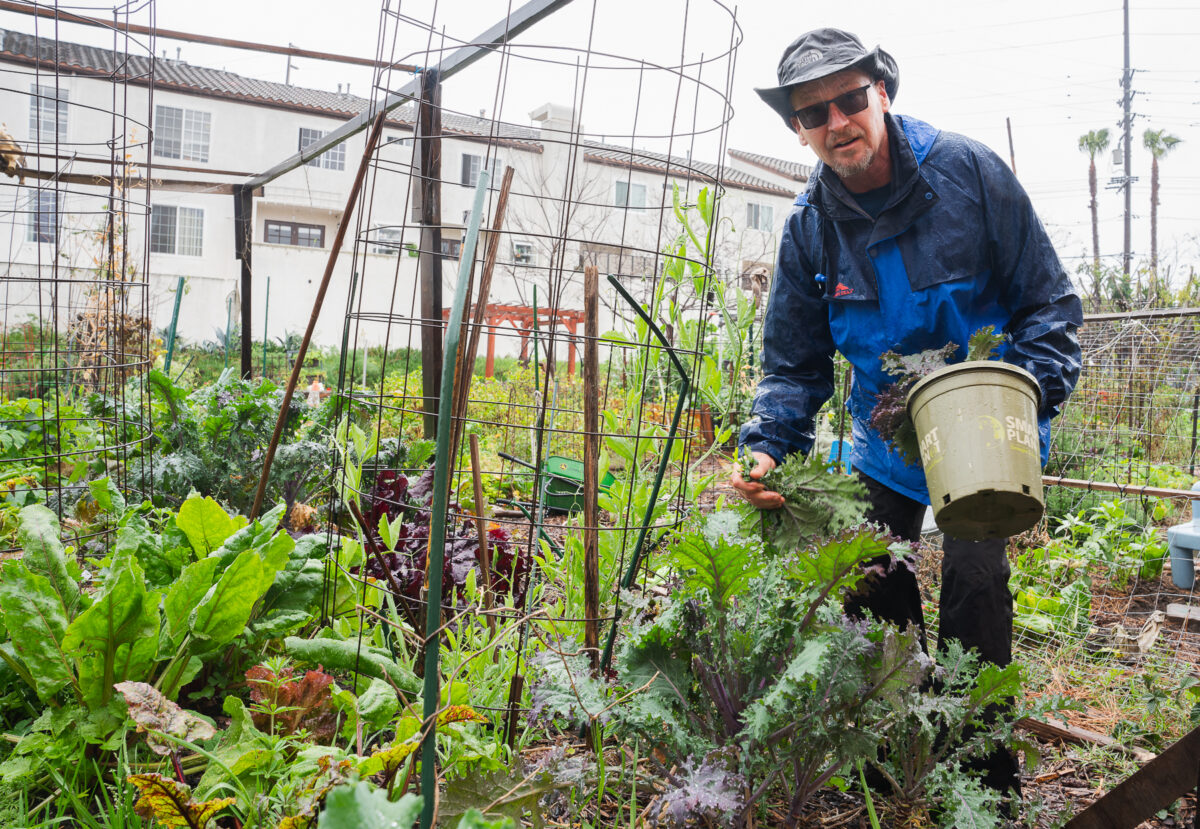Flooding in Long Beach from bouts of heavy rain that have submerged vehicles on streets and in apartment complexes can be mitigated with pockets of the city that already exist — community gardens.
Tucked away within different neighborhoods, the gardens come from Long Beach Organic, a nonprofit that converts vacant lots into green spaces for the public to enjoy and grow produce in, something that’s made possible by Long Beach’s Urban Agriculture Incentive Zone program that gives tax incentives to encourage the gardens.
The soil in these gardens can absorb and retain rainwater, on top of ditches and mulch that can disperse it in an urban landscape where concrete and pavement can create water hazards, said Dr. John Walker, a plastic surgeon who volunteers for Long Beach Organic and serves on its board of directors.
“That garden … will absorb much more water than the surrounding area because it’s just naturally a permeable space,” said Walker.
Support watchdog journalism
Who has eyes on City Hall? We do. The Long Beach Post is now a 501(c)(3) nonprofit. Donate now to support independent accountability journalism that cuts through the political spin.
Walker also built a “French drain” at Long Beach Organic’s Zaferia Junction garden, which helped city workers’ efforts to prevent flooding at the intersection of 10th Street and Grand Avenue during the recent February storms.
The drain, made of pieces of rocks and bricks, creates cavities that vacuum water down into the earth directly into a sewer line. The same technique can be implemented at the other eight community gardens to alleviate pressure on drains, said Walker.
“We mitigated flooding activity and that became part of the flood mitigation for the city,” said Walker. “And so if you’ve got nine gardens like this all over the place, then it becomes a big deal.”
Although the city has drainage facilities and works to clear catch basins and storm drains before spells of heavy precipitation, flooding is still a problem in certain areas because of aging infrastructure built for older zoning, which can be exacerbated by trash and debris clogging drains, said Keith Hoey, engineer for the city’s Public Works Department.

Many parts of the city, especially more developed areas, are also flat and impervious without a low point for water to flow to, creating excessive runoff and stress on drains, according to Hoey.
With climate change expected to bring more frequent and intense extreme weather events, Long Beach is trying to protect itself with street projects for better water diversion, trash capture devices on catch basins and even green spaces like rain gardens that absorb water in much the same way community gardens do, said Hoey.
University of California, Irvine researchers have also found that extremely severe storms that could bring disaster in the Los Angeles Basin would disproportionately impact Black and low-income communities, according to a report by the L.A. Times.
Long Beach Organic now has nine gardens dotted throughout the city with more than 250 garden plots for rent
The organization was founded in 1994 by Captain Charles Moore, who also founded the ocean plastic pollution research facility Algalita Research in Alamitos Bay. Moore is credited with bringing the world’s attention to the Great Pacific Garbage Patch while he was sailing.
Long Beach Organic and Algalita Research work in tandem in their missions, said Walker. Community gardens can catch water with herbicides, sewage and other runoff that may otherwise end up in the Pacific Ocean.

“The mission was to bridge the gap between the land and sea,” said Brianna Beyrooty, garden director at Long Beach Organic. “Whatever we put into the soil … and how we treat our land and the runoff that goes into the ocean affects each other.”
The nonprofit named its newest garden in industrial Wrigley, which was also built with flooding defenses, in honor of Moore on Sunday, Feb. 18.
It cost some $30,000 and six months of volunteer work to develop that formerly vacant dirt lot into a community garden, according to Valerie Condon, Long Beach Organic’s board president. Other gardens cost some $45,000 plus staff fees, added Beyrooty.
City officials support the gardens, but they are not their most pressing concern right now, according to Beyrooty. Although they do receive grants, Long Beach Organic needs more funding to get more of these projects off the ground, Beyrooty said.
Walker, who says the gardens “saved his life” and helped treat his depression during the pandemic, said the gardens also foster community bonds, bolster the mental health of residents and offset urban “heat islands.”
Since 2020, Long Beach Organic has also donated more than 16,000 pounds of organic produce to Cal State Long Beach’s Food Pantry to help combat food insecurity among students.
“All of these things are for our city, for our community. It’s going to stay here — it makes our community better,” said Walker.
Long Beach Organic’s Zaferia Junction Community Garden is at 3709 E. 10th St. The Captain Charles Moore Urban Community Garden is at 3121 Long Beach Blvd. More information on LBO can be found here.

